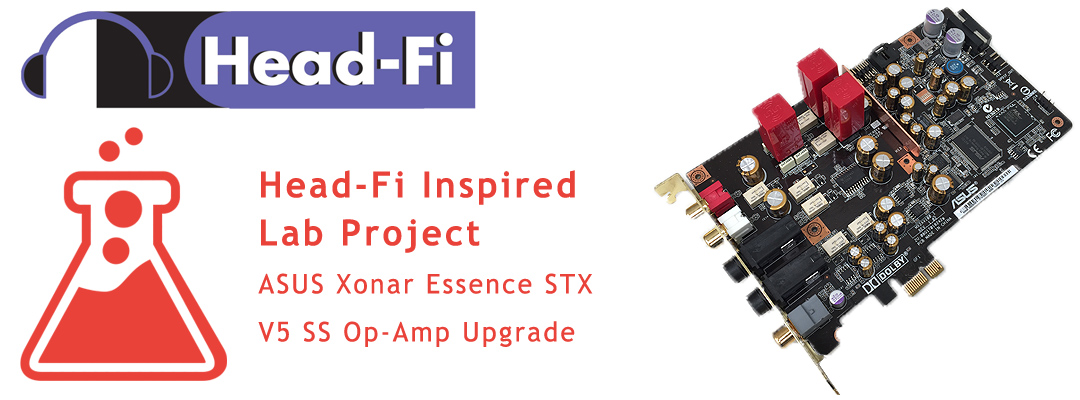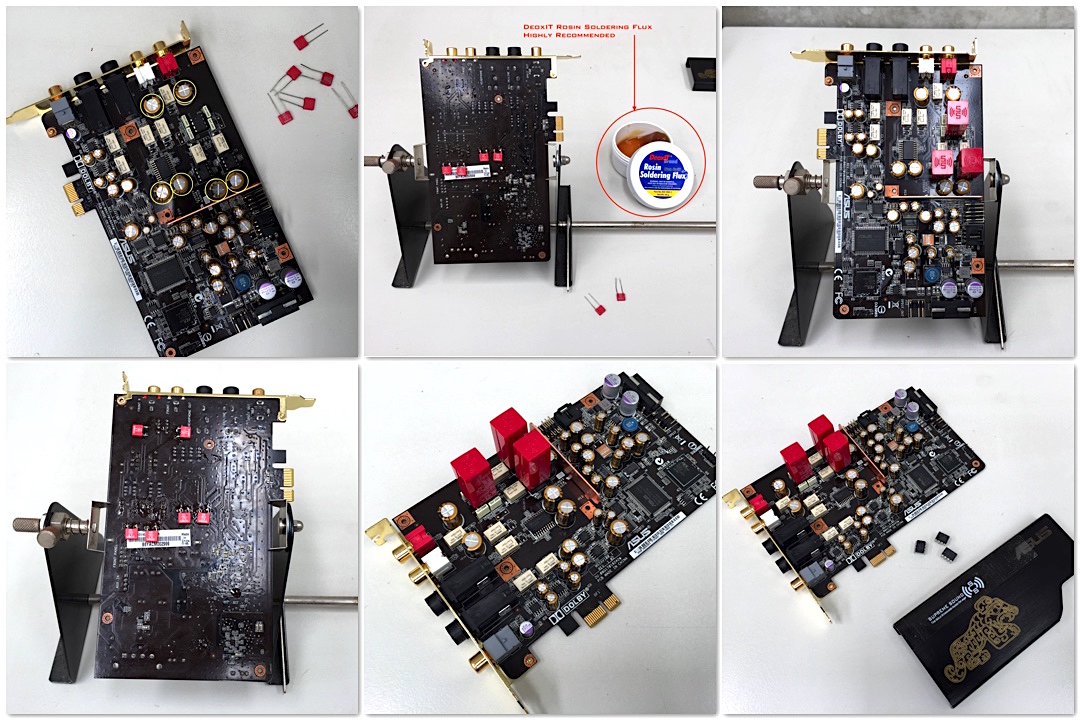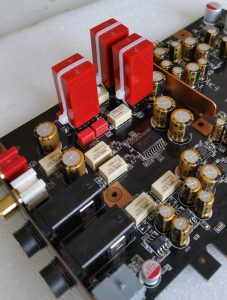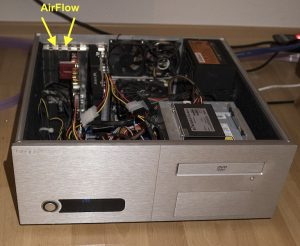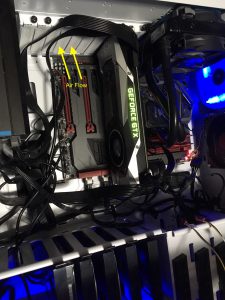The ASUS Xonar Essence STX is a leading audiophile sound card. It features a 124dbB SNR and a extreme low 0.0003% distortion. Great quality components and swappable opamps allowing for easy tweaking. It is why the Essence STX is actively discussed on audio forums such as Head-Fi.org (http://www.head-fi.org/t/421890/the-xonar-essence-stx-q-a-tweaking-impressions-thread)
Intrigued by its design and its many modification projects, we have decided to obtain one and see what we can do to it.
After the V5 Dual SS Op-Amps upgrade, this already great sound card got even better, from macro dynamics to micro details we were able to hear more and music became more balanced and lively.
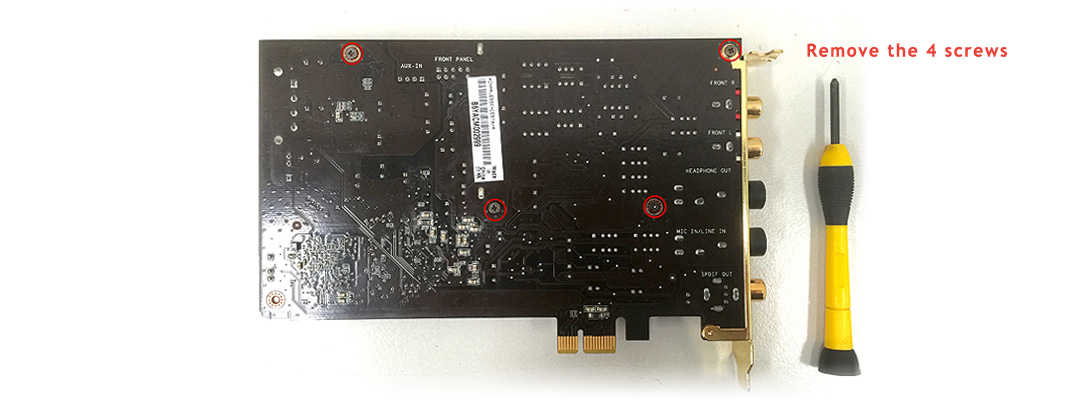
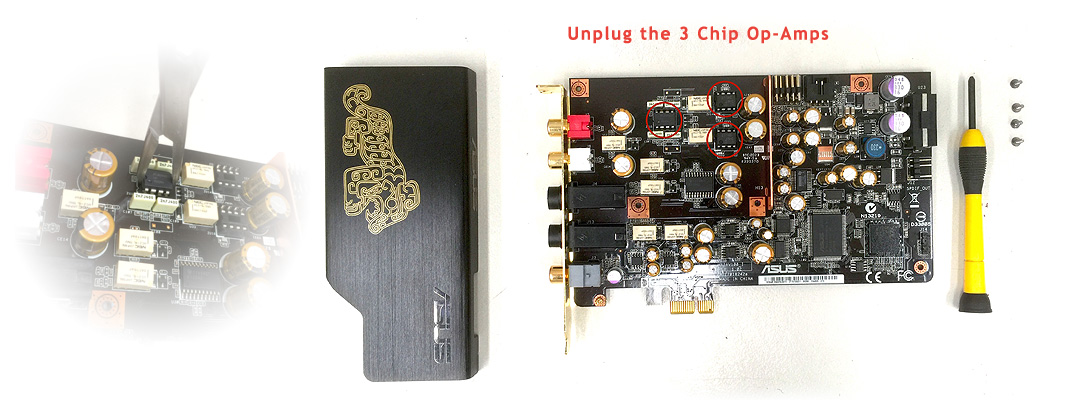
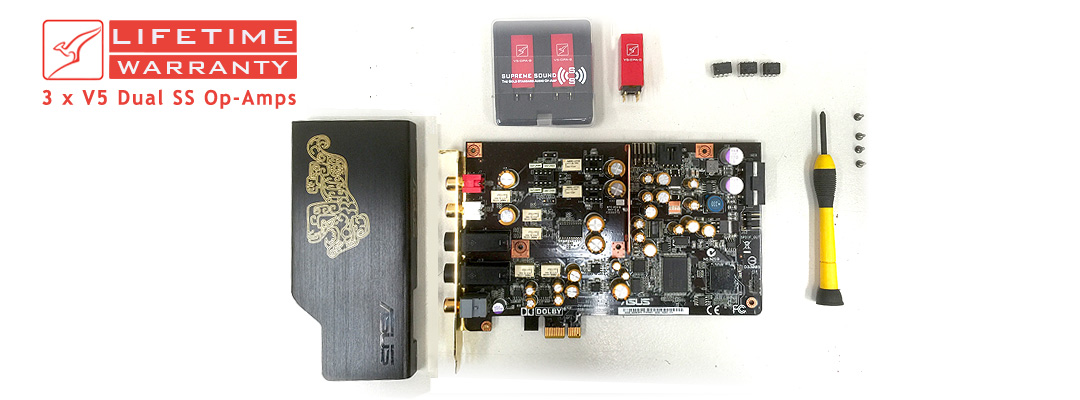
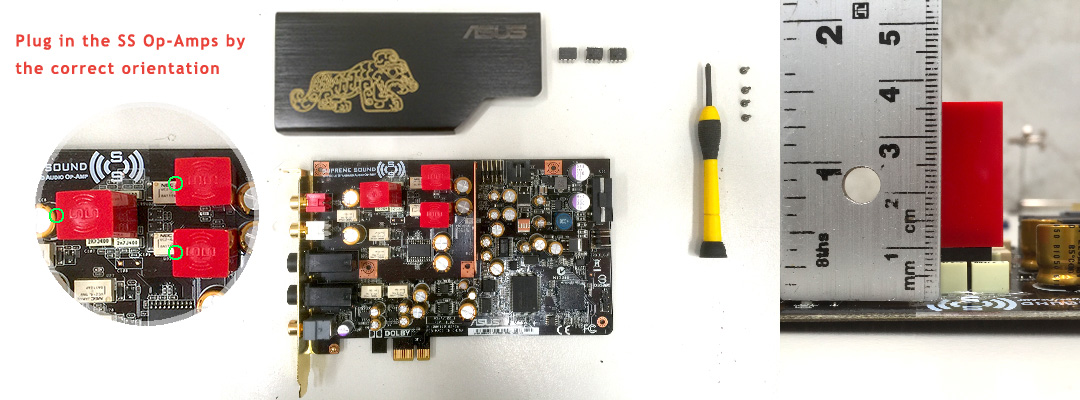
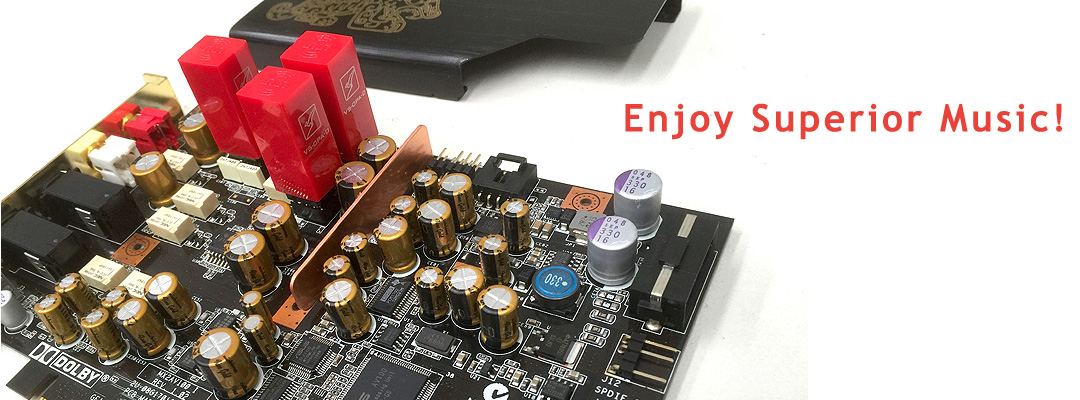
Extra MKP Mod
Adding the extra 0.1uf MKP will bring more micro details and improved top end smoothness. A worthwhile upgrade with simple soldering.
Additional Steps to ensure stability:
1. The opamp sockets on the STXII provides the perfect opportunity to roll opamps. However, like any connectors, they are subjected to wear and tear and extensive opamp rolling could slightly enlarge the silver plated holes. This issue combined with the fact that our V5s are often hung upside down inside a PC case could result in bad connection during operation. This in term could result in oscillation which heats up the opamps. Therefore please use the cable-tie included with every V5 sold to secure our audio opamps on to the soundcard as shown below.
2. The top of our V5 opamp is where the power transistors are. These transistors generate a lot of heat and as heat rises upwards, the rest of the components and PCB beneath the transistors are usually spared from heat stress. Having the opamps upside down means heat travels backwards and heats up all components on the V5 circuitry. This combined with poor air flow could stress our V5. Our suggestion is to create airflow near the V5 opamps by removing the 2 panels near the opamps indicated in the photo below. It will create sufficient airflow to keep the V5 audio opamps cool and last a lifetime.

